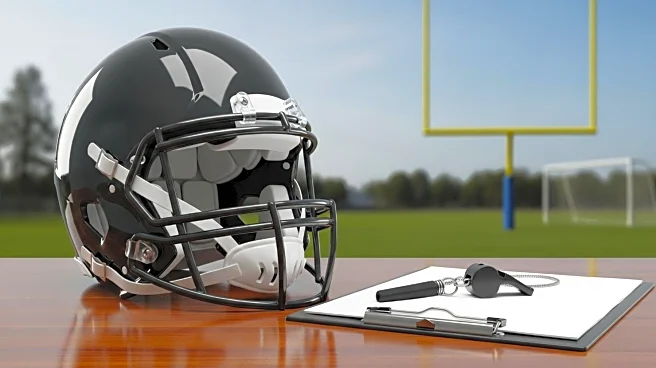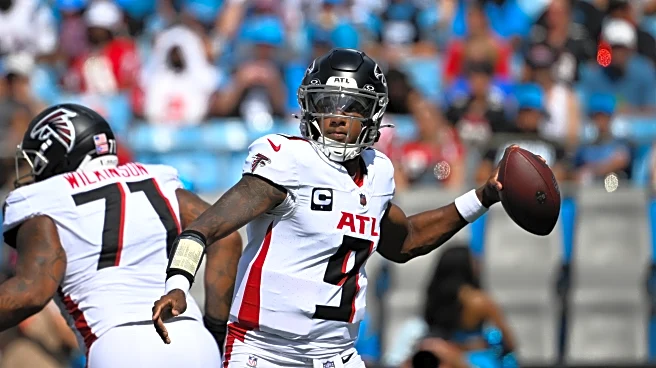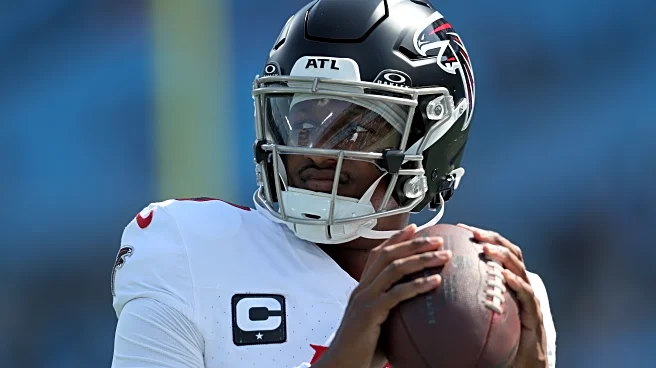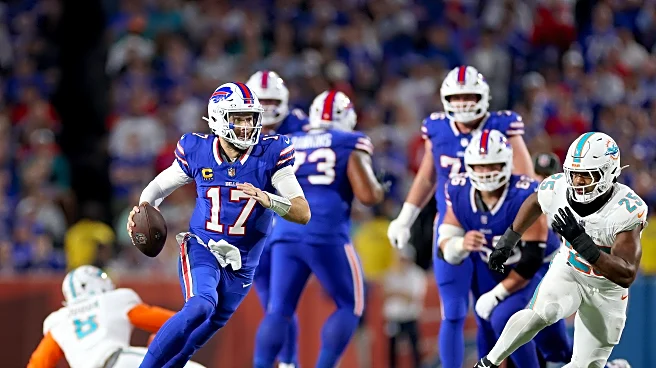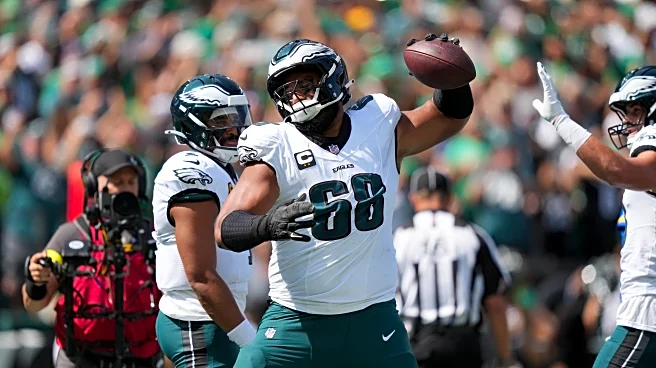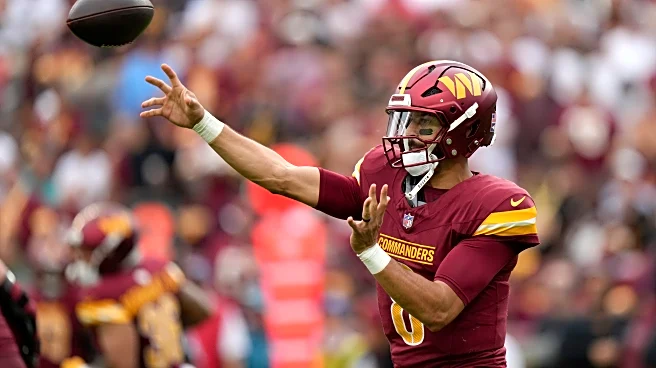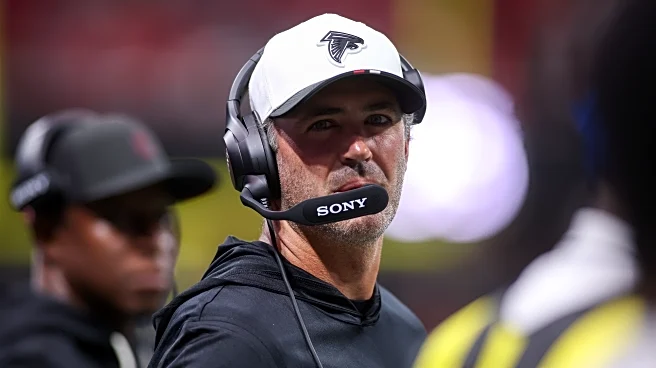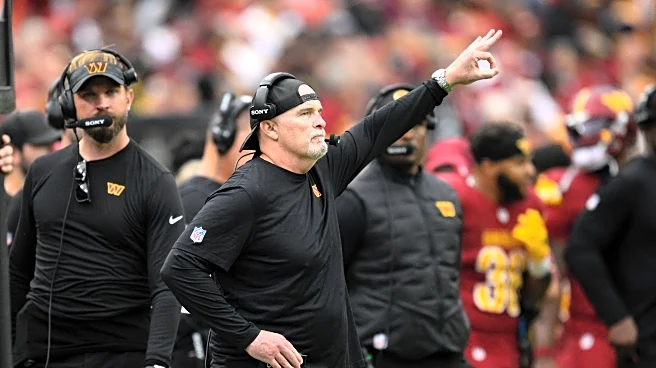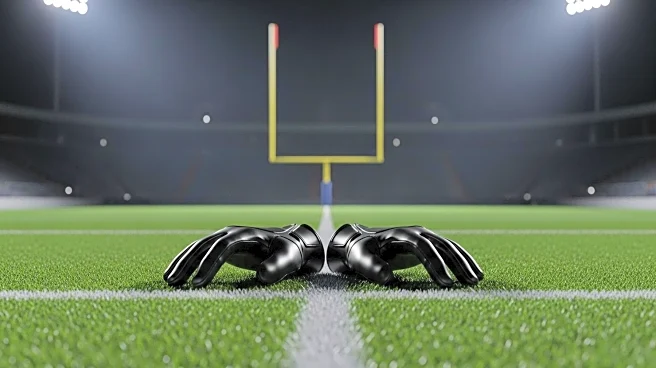The dismissal of Atlanta Falcons wide receiver coach Ike Hilliard is considered by many to be a head-scratcher. However, Hilliard’s dismissal stems directly from the cause of the Falcons’ current offensive
struggles: their declining wide receiver play. Hilliard may still be a scapegoat, mainly because it’s debatable whether his replacement, T.J. Yates, is the right pick to improve the play of this wide receiver group.
Yet the Falcons have suffered a complete offensive failure in the first three weeks of the 2025 season. Despite much ado about how the team chooses to align quarterback Michael Penix, the root of that failure lies in the wide receivers not performing in a passing attack catalyzed by the position group.
Both explosiveness and efficiency have disappeared from an offense that had an abundance of both in 2024. That has little to do with the team’s usage of the pistol or any formation, given that Atlanta’s usage is virtually identical to what it was last year once Penix took over. The offense hasn’t changed structurally, but the performance has.
Mooney’s decline has limited the Falcons’ explosiveness
Darnell Mooney was the driving force behind the team’s explosiveness last year. His 21 receptions of 20-plus yards last year ranked second among NFL wide receivers. Mooney has one such reception in his two appearances this year, which came as a meaningless play as time expired at the end of the first half last week in Atlanta’s loss to the Carolina Panthers. Meanwhile, running back Bijan Robinson is currently the team’s most explosive pass-catcher, with three explosive plays.
That has led to the team’s big-play ability dropping off a cliff to start the 2025 season. In Penix’s three starts in 2024, the team generated 11 explosive passes of 20 yards or more, ranking third in the NFL during that span. 10 of which were produced by wide receivers, with Mooney and Drake London producing eight combined. However, that has dropped to just six explosive plays through the first three games in 2025, with only half provided by the wide receivers and one each for Mooney and London.
The team’s efficiency on third downs and in the red zone has also dipped dramatically. In 2024, when Mooney or London were targeted on third downs, the Falcons converted them into first downs at a 46 percent rate. That matched the sixth-ranked third-down offense in 2024, as seen in the Washington Commanders. However, when both receivers have been targeted in 2025, they only convert 29 percent of the time, which is equal to 2024’s worst third-down offense, the Cleveland Browns.
London’s disappearance has killed the Falcons’ red-zone offense
London was also the team’s primary red-zone threat in 2024, accounting for over 40 percent of the team’s throws in that area. When targeted, London scored about 25 percent of the time, a significant uptick from the 15 percent red-zone conversion rate when targeting any other receiver. Unfortunately, London has been a non-factor thus far in the red zone in 2025. He’s been targeted just twice and has yet to catch a pass, let alone convert one into a score.
Unsurprisingly, the Falcons’ red-zone offense has dipped to start the year. After converting 75 percent of their red-zone trips into touchdowns to close out the 2024 season with Penix at the helm, the team is only converting on 29 percent in 2025.
Even so, this is one instance where the passing game did not entirely fuel the Falcons’ red-zone success in 2024. Of the team’s nine red-zone scores last year, eight of them were rushing touchdowns. Penix’s passing efficiency in the red zone last year was limited, as he completed just 46 percent of his red-zone pass attempts, underperforming the league average of 55 percent. In 2025, Penix’s red-zone completion rate has dipped even further to 33 percent because he hasn’t been able to get London more involved and has also missed an open Kyle Pitts for possible touchdowns two weeks in a row when the team has gotten into scoring position. Getting better in the red zone is a significant area for growth for Penix in his young career.
There is doubt that Yates is the right choice to revamp the receivers
Nevertheless, the Falcons need to see increased production from their wide receivers, which directly relates to them getting in sync with Penix. That hasn’t been the case for the first three games, and it led the Falcons to make a change on their coaching staff, hoping it would spark improvement.
Is Hilliard to blame for those struggles? It’s hard to say, given the position group’s success in 2024. Mooney, London, and third wide receiver Ray-Ray McCloud all had career-best performances. Improved play from veteran receivers was the opposite of what happened when Yates served as the team’s wide receivers coach in 2022 and 2023. This is why skepticism is warranted over whether Yates’ reassignment will improve the play of this unit. While London did have success during Yates’ tenure, he ascended under Hilliard’s tutelage to become one of the NFL’s most productive wide receivers.
Besides London, the Falcons got little from the rest of their wide receivers under Yates’s watch. Olamide Zaccheaus and KhaDarel Hodge were solid contributors during those years. Still, few have fond memories of the stints of Bryan Edwards, Mack Hollins, Scotty Miller, and Van Jefferson during the same span. All saw precipitous drops in production while being coached by Yates. While none were stars in their previous stops before arriving in Atlanta, they showed themselves to be capable role players. But, with the Falcons, all were afterthoughts.
Some of that could fall at the feet of former play-caller Arthur Smith, whose offense wouldn’t be described by many as “wide receiver friendly.” That would run counter to how many would describe current offensive coordinator Zac Robinson’s offense, even if it doesn’t appear that way so far in 2025. The hope is that, given both Yates and Robinson’s backgrounds as quarterbacks, they may have a much better connection this time around, which could get more out of the former. Yates’ background may help him bring a quarterback’s perspective to the wide receiver room, in the hopes of bridging a stronger rapport between Penix and the veteran receivers. Yet again, given that we’ve seen little evidence of these capabilities from Yates so far, everybody should be skeptical about whether Hilliard’s dismissal will pay any dividends.
Meanwhile, a lot of discourse about the Falcons’ offensive dysfunction centers on their overuse of the pistol formation and lack of playing under center. It may be worthwhile for Robinson to switch things up and implement more under-center passing. That may better sync Penix with his receivers’ route timing by having a more traditional dropback. Yet, there are numerous reasons why the Falcons may be slow to adopt that style of offense.
Falcons may not be built to play more under center
Firstly, Penix lacks experience as a traditional dropback quarterback. He spent the bulk of his time at both Indiana and Washington during college working out of the shotgun and pistol, which has continued into the pros. J.T. O’Sullivan of the QB School noted Penix’s footwork needed more refinement last summer during his first preseason action. With a limited number of reps in the past year, it’s unlikely that it has improved significantly. So the team’s refusal to throw under center may be linked to discomfort from their young quarterback.
Secondly, a more traditional under-center offense could expose more potential weaknesses along the offensive line. Much was made about the concerns for the left-handed Penix’s blindside protection, with Kaleb McGary manning right tackle, who is a far better run blocker than pass protector. The Falcons downplayed those concerns due to their belief that their usage of pistol and shotgun mitigated the need for a true blindside protector. Those formations give quarterbacks a far more comprehensive view of the entire defense, essentially eliminating the “blind” aspect of the protection. Those concerns only grew when McGary went down with a season-ending injury in August and was replaced by backup guard Elijah Wilkinson.
Going to more under-center offense could expose more of Wilkinson’s limitations as a pass protector. However, the Falcons dialing up more play action could mitigate those limitations. Arthur Smith adopted a high rate of play action when he first incorporated the pistol into the offense in 2022 to hide the perceived limitations of McGary and others at the time. The lack of play action has been a central criticism of the current Robinson-led offense.
Increased play-action usage would benefit the Falcons, but we may be discovering that Robinson isn’t adept at scheming or calling it. There has been minimal improvement from last year through the early portion of 2025, and it may never come. For all these reasons, rolling out more under-center plays may not be the easy fix some proclaim it to be.
Bottom line: everyone has to perform better
Without Robinson being able to scheme up “easy explosives” via play action, it puts more pressure on the Falcons’ wide receivers to win via a standard dropback attack. Mooney and London led a group that achieved this at an extremely high level in 2024, which was the main reason the Falcons still produced a capable offense despite having a bare-bones play-action attack. As already explained, this hasn’t been happening in 2025, leading to the offense’s stagnation.
Not only are the receivers not playing as well, but Penix is also experiencing struggles with missed reads and throws. This then puts more pressure on the play-caller, Robinson, to make up the difference with scheme, which in turn potentially exposes his limitations.
The path forward is clear. Everybody has to perform better: the wide receivers, Penix, and Robinson. Or else the complete offensive failure will continue.

